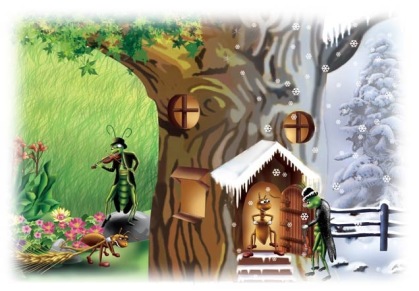Today Richard turns 30. It’s one of those round number birthdays, divisible by ten without fractional results, that we tend to think of as especially significant. Of course, in reality it’s just the turn of a calendar page; it’s not as if the adulthood fairy taps you with her wand when you turn 30 and converts you into a real grown-up.
And yet, it’s significant just the same, isn’t it?
I think we tend to focus on those round number birthdays, especially the early ones, because each decade of our existence can be aptly captured by a word or two. From zero to 10 you’re just a kid, happy and unselfconscious and wondering at the world and soaking up just about everything. From 10 to 20, you’re the self-absorbed teenager, fretting about your popularity and your place in the social, sports, and academic order at middle school and high school and college. And in your 20s, you’re trying to figure out which way your life will go, finishing college, taking your first long-term job and then leaving it, moving from one city to another, and perhaps getting a second degree.
 30, though, seems to be the jump-off point for real adulthood. You’ve settled on your career, and your personal situation is more settled, too. People treat you like a fully functional, contributing member of society. You stop getting carded at bars. And for some of us, your parents start to lean on you for help and support and — gulp! — advice and decision-making. After you hit 30, Mom and Dad start to seem a lot less iconic and a lot more human.
30, though, seems to be the jump-off point for real adulthood. You’ve settled on your career, and your personal situation is more settled, too. People treat you like a fully functional, contributing member of society. You stop getting carded at bars. And for some of us, your parents start to lean on you for help and support and — gulp! — advice and decision-making. After you hit 30, Mom and Dad start to seem a lot less iconic and a lot more human.
I distinctly remember when Kish and I turned 30. We hosted a party for our friends at a local joint called the Grandview Cafe. All of the people who were there were couples about our age, early in their careers, with little kids at home. It was a fun party, but not the kind of wild, kick out the jams, loud-music-and-on-the-edge-of-barfing revelry of earlier days. At the time I had worked at the firm for about eight months, Richard hadn’t quite hit his first birthday, and unbeknownst to us Russell would be joining the family a year later. We were no longer on the cusp of adulthood — it had arrived.
Parents tend to hold on to a mental image of their kids as kids — or at least, I do. When I think of Richard, my brain begins with the skinny, blond-haired kid who loved Home Alone and liked to build elaborate Lego worlds and created a comic-book character named Blurby and loved roller coasters. That mental image is no longer accurate, and hasn’t been accurate for a long time. He’s built a successful career as a talented professional journalist, he’s engaged to be married, and he’s been thoughtfully navigating the shoals of adulthood, on his own, for several years now.
In short, he’s 30.
Happy birthday, Richard!


 Over the next few years, our collective credit card balances declined steadily, and then stayed flat for a while. Lately, however, they’ve been moving up again, and the trend lines are unmistakable — people are using their credit cards more and are carrying larger balances on them. Auto loan balances, too, are at record levels. The WSJ reports that much of the growth in collective credit card balances has come because banks have been reaching out and marketing their cards to subprime borrowers. (There’s that troubling subprime word again.)
Over the next few years, our collective credit card balances declined steadily, and then stayed flat for a while. Lately, however, they’ve been moving up again, and the trend lines are unmistakable — people are using their credit cards more and are carrying larger balances on them. Auto loan balances, too, are at record levels. The WSJ reports that much of the growth in collective credit card balances has come because banks have been reaching out and marketing their cards to subprime borrowers. (There’s that troubling subprime word again.) It’s hard to believe somebody so tone deaf could become the Secretary of an important federal agency, but let’s face it — we don’t exactly have the best and brightest staffing up our public service jobs these days.
It’s hard to believe somebody so tone deaf could become the Secretary of an important federal agency, but let’s face it — we don’t exactly have the best and brightest staffing up our public service jobs these days. 
 “Applewood,” “smoked,” and “bacon” have become inextricably linked. No one has plain old Oscar Mayer anymore. No, it has to be “applewood smoked bacon.” It’s become as ubiquitous on restaurant menus as quinoa and kale.
“Applewood,” “smoked,” and “bacon” have become inextricably linked. No one has plain old Oscar Mayer anymore. No, it has to be “applewood smoked bacon.” It’s become as ubiquitous on restaurant menus as quinoa and kale. They’ve put a new fountain in at one of the entrances to the Columbus Commons. It’s a nice fountain, with its lily pad look and bright green surrounding shrubbery. But then, all fountains really are nice, aren’t they? The burble of the water, the coolness of the air around them, the slight spray on your face, the gleam of the shimmering water on a sunny day — these are the things that make fountains a great addition to any metropolitan area.
They’ve put a new fountain in at one of the entrances to the Columbus Commons. It’s a nice fountain, with its lily pad look and bright green surrounding shrubbery. But then, all fountains really are nice, aren’t they? The burble of the water, the coolness of the air around them, the slight spray on your face, the gleam of the shimmering water on a sunny day — these are the things that make fountains a great addition to any metropolitan area.
 I reflexively associate asphalt with summer because we lived on an asphalt street when I was a kid. After a rugged Akron winter, come spring the cracks and holes in the street would be patched with more asphalt and a layer of tar. When the hot summer months arrived, the asphalt would reach scorching temperatures and sprout tar bubbles, and the smell was as rich and heady as the sulphur fumes belched out by the rubber factories downtown. You got tar on your sneakers, tar on your bare feet, and tar on your bicycle tires.
I reflexively associate asphalt with summer because we lived on an asphalt street when I was a kid. After a rugged Akron winter, come spring the cracks and holes in the street would be patched with more asphalt and a layer of tar. When the hot summer months arrived, the asphalt would reach scorching temperatures and sprout tar bubbles, and the smell was as rich and heady as the sulphur fumes belched out by the rubber factories downtown. You got tar on your sneakers, tar on your bare feet, and tar on your bicycle tires. We’re on the verge of the unofficial beginning of summer. You can feel it in your bones, and today you’ll feel it in your workplace, too, as you walk past lots of empty offices and darkened cubicles and overhear co-workers talking about their fun weekend plans and see them anxiously looking at clocks and watches and cell phones .
We’re on the verge of the unofficial beginning of summer. You can feel it in your bones, and today you’ll feel it in your workplace, too, as you walk past lots of empty offices and darkened cubicles and overhear co-workers talking about their fun weekend plans and see them anxiously looking at clocks and watches and cell phones . David Brooks of the New York Times recently wrote
David Brooks of the New York Times recently wrote  30, though, seems to be the jump-off point for real adulthood. You’ve settled on your career, and your personal situation is more settled, too. People treat you like a fully functional, contributing member of society. You stop getting carded at bars. And for some of us, your parents start to lean on you for help and support and — gulp! — advice and decision-making. After you hit 30, Mom and Dad start to seem a lot less iconic and a lot more human.
30, though, seems to be the jump-off point for real adulthood. You’ve settled on your career, and your personal situation is more settled, too. People treat you like a fully functional, contributing member of society. You stop getting carded at bars. And for some of us, your parents start to lean on you for help and support and — gulp! — advice and decision-making. After you hit 30, Mom and Dad start to seem a lot less iconic and a lot more human. When I was in Cleveland yesterday, I got a bird’s-eye view of the ongoing work on Public Square. By all accounts, it’s on track to be completed in time for the Republican Convention in Cleveland in July.
When I was in Cleveland yesterday, I got a bird’s-eye view of the ongoing work on Public Square. By all accounts, it’s on track to be completed in time for the Republican Convention in Cleveland in July. Next to, perhaps, pizza, tacos have changed the most since I was a kid. In those days tacos were a tasty, but extremely limited, food option that inevitably consisted of a somewhat stale hard corn shell that broke into smithereens when you bit into it, ground beef browned to within an inch of its life, a dollop of refried beans, and taco sauce — along with the vegetables of your choice, if you wanted to ruin a good thing.
Next to, perhaps, pizza, tacos have changed the most since I was a kid. In those days tacos were a tasty, but extremely limited, food option that inevitably consisted of a somewhat stale hard corn shell that broke into smithereens when you bit into it, ground beef browned to within an inch of its life, a dollop of refried beans, and taco sauce — along with the vegetables of your choice, if you wanted to ruin a good thing. The big point of contention is whether living in captivity contributes to those deaths, as animal rights advocates contend, or whether the creatures at Sea World are no more prone to infections than members of the species living in the wild. As Richard’s article reports, that’s tough to assess, because there aren’t many reliable studies of the lives of these mammals in their native habitat. Animal rights advocates argue that creatures that have evolved over millennia to range widely over large areas of ocean, hunt their own food, and form relationships in the wild simply aren’t suited to captivity. The advocates believe the orcas become stressed (and show it by breaking their teeth chewing on concrete and metal) and the stress makes them more prone to infection. Richard’s article quotes some former SeaWorld trainers who talk about the constant medication that some of the mammals have received. And while we don’t know the prevalence of infection deaths in the wild, we do know this — orcas, dolphins, and sea lions have somehow survived and thrived in our oceans for centuries without have to be heavily medicated by human beings.
The big point of contention is whether living in captivity contributes to those deaths, as animal rights advocates contend, or whether the creatures at Sea World are no more prone to infections than members of the species living in the wild. As Richard’s article reports, that’s tough to assess, because there aren’t many reliable studies of the lives of these mammals in their native habitat. Animal rights advocates argue that creatures that have evolved over millennia to range widely over large areas of ocean, hunt their own food, and form relationships in the wild simply aren’t suited to captivity. The advocates believe the orcas become stressed (and show it by breaking their teeth chewing on concrete and metal) and the stress makes them more prone to infection. Richard’s article quotes some former SeaWorld trainers who talk about the constant medication that some of the mammals have received. And while we don’t know the prevalence of infection deaths in the wild, we do know this — orcas, dolphins, and sea lions have somehow survived and thrived in our oceans for centuries without have to be heavily medicated by human beings.